
Monica Rose Morris, "Out of Office," 2019, digital photographs
Alumni
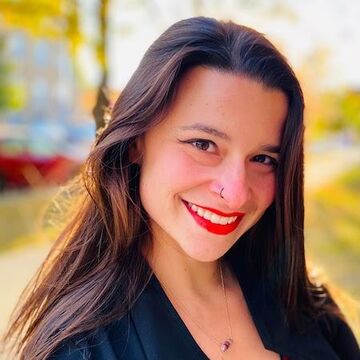
Jessica Walters (MA 2021)
I currently work at Asian Human Services (AHS), a community mental health agency that specializes in serving immigrants and refugees. I was hired as a child and adolescent counselor and art therapist. Primarily, I provide individual counseling/ art therapy services to children in Chicago Public Schools. Additionally, I lead community support and art therapy groups for adult clients.
AHS was my first fieldwork placement as a MAATC student. I was officially hired at the agency one month before I graduated from SAIC. My fieldwork supervisor at AHS was incredibly supportive, and my experience as an AHS intern most certainly prepared me for my current full-time position.
In addition to landing my job, I received tremendous support from SAIC faculty as a student. With help from my thesis advisor, I was able to publish my thesis before graduating.
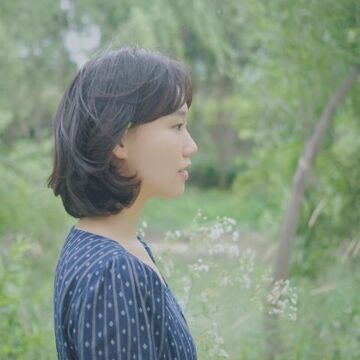
Gina Jeong (MA 2020)
As challenging as it was, I found great joy in writing my MA thesis, "Farewell Quilt: Turning Loss into Warmth and Comfort." It was an ethnographic study examining the relationship between fiber art-based intervention, making a community "Farewell Quilt,” and the grieving process of the residents and staff at a long term care facility in Chicago, IL. Although it was interrupted by the pandemic, I have learned so much from the participants and the process.
With that said, this is something I would like to continue doing post graduation. I would like to participate in human subject research or community-based art projects where I can directly engage with the participants and seek to create a more death-positive culture and destigmatize dementia. While I was doing a literature review for my thesis, I found that there were not many articles written from the perspective of the individuals with memory loss or focusing on their lived experiences. My hope is to participate in/ conduct research where the participants' lived experiences guide the research. I want participants’ voices to be respected and included.
This program allows you to really reflect on yourself, check your biases, unlearn and relearn the things that you have learned before, and think critically. There are opportunities for you to collaborate on projects with the individuals you work with at your fieldwork site, which is a great learning experience. I enjoyed working on a project that was in collaboration with the participants at Expressions at Advocate Lutheran General Older Adults Services, a site that offers therapeutic day programs for older adults with memory loss. Together, we made an installation that we showcased at the MAATC Graduation Exhibit. I would highly recommend that you make use of this opportunity if you are interested in collaborating with the people that you work with!
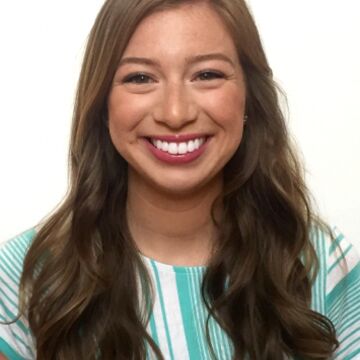
Jennifer Graves Sullivan (MA 2019)
I started applying to jobs during my last semester. I went all in and pursued my dream job of being a medical art therapist in Texas. I was hired in my hometown of Houston at Children’s Memorial Hermann Hospital in May 2019, just after graduation. I work in the world’s largest medical center on a multidisciplinary team as one of four expressive therapists. Everyday I meet with new patients. We are one of the busiest Level 1 trauma centers in the nation. I work in all units of the hospital and help to normalize the hospital experience for children, adults, and caregivers who have both accidental and non-accidental injuries. In this acute care setting, I have the privilege of meeting families, providing emotional support, and offering the opportunity for self-expression as a way of coping.
As much as you prepare to learn how to work with others, you really get to learn more about yourself. During this self-reflection, you can be yourself and be vulnerable with your new cohort that will support you along the way. Everyone is amazing and has something valuable to bring to the table. You will get out what you put in, so be prepared to grow in new ways and dig deeper into your own processes.
The three years of grad school flies by; invest in your cohort, because they will be there to support you as your grapple, triumph, and forge ahead. Also, be sure to look up requirements for the state where you desire to practice. You don’t want any surprises once you try to get licensed!
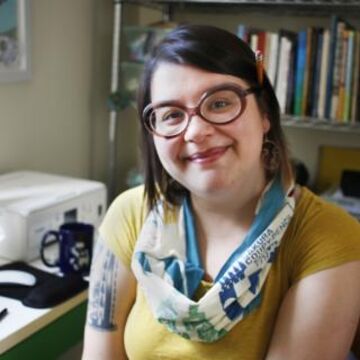
Teresa Sit (MA 2017)
My first job after graduating was as art therapist for Seasons Hospice and Palliative Care, based in Rosemont, IL. It was a challenging and rewarding experience, where I learned how to be a "mobile art therapist," complete with a set of drawers full of art supplies in the back of my car. Driving all over the greater Chicago area every week, I was the lone-wolf art therapist in the organization and I had the opportunity to work closely with patients and their families, doctors, nurses, music therapists, and social workers. Through them, I learned so much about adaptation, grief-work, bereavement, and the systems surrounding the dying process. I stayed with Seasons for about a year and a half before being offered the position as Art Therapist and Mental Health Promotion Specialist in the Wellness Center here at SAIC. In my current role, about half of my time is spent working with SAIC students in one-on-one art therapy sessions. I am also the confidential davisor for the school, providing emergency intervention and ongoing support to survivors of sexual assault with the training, duties, and responsibilities described in Section 20 of the Preventing Sexual Violence in Higher Education Act. As confidential advisor, I connect survivors with resources in the community and inform survivors of their rights and the options available to them. The other half of my role is spent collaborating with staff and faculty on programming opportunities and outreach like the Meditation Series, Mental Health First Aid, and the Wellness Center Student Support Network. I never stopped picking up freelance photography gigs and expanding my artistic practice through illustration, fiber-based projects, and working on my music!
Fieldwork and internships will ultimately shape your therapeutic identity. Being a part of the SAIC community allowed me to connect with some of the best supervisors and internship experiences available in the field. I constantly tested my personal relationship with art and art-making as an art therapy student. I also relished my studio courses, putting together gallery shows with my cohort, and developing my artist identity alongside the clinical work.
You will be asked to examine your identity (your biases, strengths, fears, passions) through the reading materials, artwork assignments, and your internship experiences. Allowing your peers, faculty, and experiences to push your boundaries will help you to build awareness of what your boundaries are and decipher what support systems you may need to secure in order to be a good therapist to others. The MAATC program has changed quite a bit since I graduated, and I think that also speaks to what students might expect: the ability to influence the structure of the program for future generations of Art Therapists.
When it comes to being a therapist, trust that life experiences are equally important to education. As a Master’s in Art Therapy student at SAIC, you come into contact with a lot of talented art therapists and at first it will feel natural to try to mimic them in the therapeutic setting. Go ahead and try it out -- like training wheels, they'll come off when you are ready and you can bring your true self into the room. The people that you work with will notice and appreciate your authenticity, and it will make you a stronger clinician.
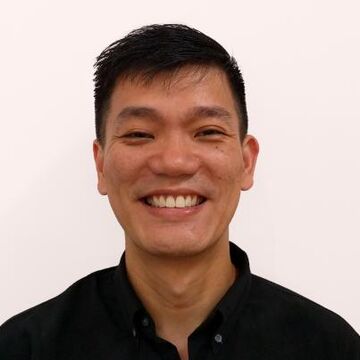
Sze-Chin Lee (MA 2015)
After graduating from SAIC, I worked in the US for about a year as an art therapist. After gaining that experience, I returned to Singapore to continue my art therapy work. I continue to practice as an art therapist, art educator, and artist in Singapore.
I am currently working in a part-time capacity with two hospitals, providing art therapy services mainly for older adults with dementia. My research interests include the intersections of art therapist-art educator-artist identities, as well as the impact of digital technologies on social, emotional, and psychological well-being. I have been investigating how some of these immersive new media experiences can promote creative self-expression and encourage mindfulness.
Most recently, I have been piloting digital eLearning projects in the community and for the National Gallery Singapore. I am also exploring the development of these eLearning experiences for the Asian Civilisations Museum and the National Museum of Singapore.
The most impactful learning experiences were the ones in which I actively sought. From the studio classes in puppetry, experimental animation, immersive environments in art and technology, to the on-campus work as the assistant to the Mental Health Promotion and Care Specialist at SAIC, as well as my involvement as a fellow student leader of the Wellness Centre Student Support Network: these were experiences that were related to, and greatly informed my eventual work as an art therapist.
I learned a lot during my time at SAIC, but I honestly do not think that we could have squeezed anymore into a very packed and tight curriculum. I feel that my graduate education at SAIC was only the beginning of my art therapy work; there is so much to learn in the field of art therapy, and it is a continuous learning journey for every art therapist. I place great importance on professional development, hence I have not stopped learning since I graduated!
You can view additional work and art tutorials by Sze-Chin here.
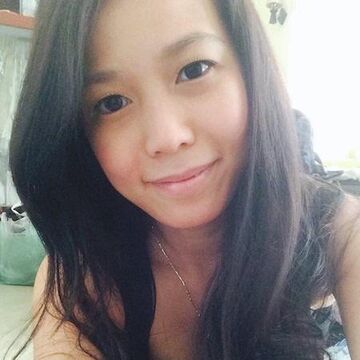
Hoa Diep (MA 2014)
Since graduating in 2014, I have served as an art therapist with Amita Health at Alexian Brothers Behavioral Health Hospital (ABBHH) in Hoffman Estates, IL (2014-2017). I had the opportunity to work with a diverse group of clients during my time at ABBHH. I was primarily assigned to the inpatient units facilitating groups with geropsychiatry, chemical detox, eating disorders, self-injury, adolescents, and adults with diagnosis of mood disorders and/or psychosis. I relocated to Los Angeles, CA in 2017. This move allowed me to expand my professional experience in administration as the program director and art therapist for a residential rehab center for adults with schizophrenia. More recently, I accepted an offer to run an art program for a non-profit school based in West Los Angeles.
I am deeply grateful for my experience at SAIC and the personal/professional connections I made during my time there. The reason I chose SAIC's Art Therapy program was because of the emphasis on art processes and mediums. My areas of comfort tend to lean towards clinical work, empirical data, and cognitive approaches. I knew that SAIC's program would challenge and push me outside this comfort zone. My work as an art therapist is rooted in the rich resources of SAIC's MAAT community.
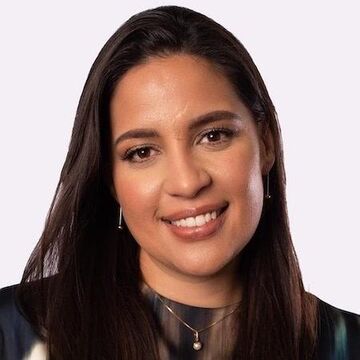
Andrea Velasco E. (MA 2014)
After graduation I have worked in three different states and a variety of settings. First, I was offered a fellowship at the site I was interning during my last year of Grad School (Children's Home + Aid Daniel F. and Ada L. Rice Child & Family Center). My first job was as a bilingual clinician for Pilsen Wellness Center providing individual and family therapy to clients from the community. Unexpectedly, I had to move to Los Angeles to be with family due to my parents' health needs and I worked for the Autism Learning Partners as a direct provider for children with developmental disabilities meeting them at school and/or their home. I returned to Chicago and began working for a community agency and the Alzheimer's Association as a bilingual clinician providing services to people around the country and internationally. I have now transitioned to a group private practice called Ashé Counseling & Coaching providing individual and couples therapy to a diverse group of young professional adults. With this practice I have been now promoted to clinical director for our developing Austin, Texas location.
The MAAT program's impact on my development as an art therapist, clinician and human continues to evolve. Because of the program, I was privileged to be mentored and taught by a group of trailblazer professionals in our field. I built life-long friendships with colleagues and cohort members who continue to shape and support me through this journey. Being at SAIC also provided me the opportunities to be part of many committees and share spaces with change makers and creative leaders both in the school and out in the community.